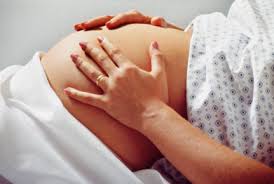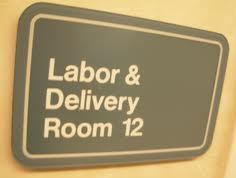March 3rd, 2011 by Linda Burke-Galloway, M.D. in Better Health Network, Health Tips
No Comments »

 Having a baby can be a beautiful thing until something goes wrong. The tragedy is that many high-risk conditions can be managed appropriately if the patient is cooperative and the healthcare provider is competent and well trained. Unfortunately, almost 600 pregnant women die in the U.S. each year from complications and the most common complication is significant blood loss after birth or postpartum hemorrhage (PPH).
Having a baby can be a beautiful thing until something goes wrong. The tragedy is that many high-risk conditions can be managed appropriately if the patient is cooperative and the healthcare provider is competent and well trained. Unfortunately, almost 600 pregnant women die in the U.S. each year from complications and the most common complication is significant blood loss after birth or postpartum hemorrhage (PPH).
PPH occurs when there is a blood loss of 500 cc or greater for a vaginal delivery and 1,000 cc after a cesarean section (C-section). Or, if you were admitted with a hemoglobin of 12 and it drops by ten points to 11, there should be a high index of suspicion for PPH as well. Therefore, if you feel lightheaded or dizzy, have palpitations or an increased heart rate after delivering a baby, inform the hospital staff immediately.
The most common cause of PPH is uterine atony or lack of contractions after the baby is delivered. Any pregnant condition that stretches the uterus significantly — such as having twins or a higher gestation, excess amniotic fluid (aka polyhydramnios), a prolonged induction of labor (greater than 24 hours) — increases the risk of PPH. Retained products of conception, such as the placenta, also places the patient at risk for developing PPH.
Other risk factors for PPH include:
- Women with a known placenta previa
- African-American women
- Hypertension or preeclampsia
- Mothers with infants weighing greater than 8.8 pounds (or 4,000 grams)
- Mothers with greater than seven children
- Women with a history of hemophilia
If you have any of the risk factors listed above, please be proactive and discuss the possibility of a PPH with your healthcare provider. Read more »
*This blog post was originally published at Dr. Linda Burke-Galloway*
February 17th, 2011 by Peggy Polaneczky, M.D. in Health Tips, Research
No Comments »

 Bioadhesives are a reasonable alternative to sutures for repair of perineal lacerations sustained during childbirth, according to a poster presentation at last week’s annual meeting of the Society for Maternal-Fetal Medicine.
Bioadhesives are a reasonable alternative to sutures for repair of perineal lacerations sustained during childbirth, according to a poster presentation at last week’s annual meeting of the Society for Maternal-Fetal Medicine.
Researchers at the Hadassah Hebrew University Medical Center in Jerusalem randomized women with first degree perineal tears to either 2-octyl cyanoacrylate (Dermabond) adhesive glue or suture for wound closure. While healing and incisional pain was similar, women who received the adhesive closure were more satisfied than those who were sutured.
In Portugal, bioadhesives have been studied for closure of the top skin layer of an episiotomy repair, and found to shorten the duration of the procedure with similar outcomes to suture in terms of pain, healing, and infection.
Biologic adhesives are chemically related to Super Glue, which is ethyl-cyanoacrylate. Midwives have been using Super Glue for perineal wound repair for some time, according to Anne Frye, who has authored a book on wound closure for midwives, and who gives instructions for its use in repair of perineal lacerations. Apparently Super Glue was also used by the military during Vietnam for wound closure.
A PubMed search on Dermabond finds multiple studies of its use, from plastic surgery to mastectomy, surgical wound closure, retinal surgery, lung and gastric leak closure, and even on esophageal varices. RL Bates mentions Dermabond as an option to repair skin tears in elderly patients. This stuff is turning into the duct tape of the medical profession.
It’s important to remember that adhesives are only for superficial skin closure, as use in deeper layers can cause irritation and burning of tissues. Side effects of their use include irritation and allergic reactions and of course wound infections, and pain can always occur no matter how one closes a wound.
*This blog post was originally published at The Blog That Ate Manhattan*
February 9th, 2011 by IsisTheScientist in Opinion, Research
No Comments »

 I can already tell that this pregnancy is different from my first. When I was pregnant with Little Isis, I drank no caffeine and took no over-the-counter medication. I remember having a few headaches and Mr. Isis fighting with me to take a headache pill. I would then proclaim dramatically, “But I can’t! What if it hurts the baby?!”
I can already tell that this pregnancy is different from my first. When I was pregnant with Little Isis, I drank no caffeine and took no over-the-counter medication. I remember having a few headaches and Mr. Isis fighting with me to take a headache pill. I would then proclaim dramatically, “But I can’t! What if it hurts the baby?!”
This morning, now pregnant with my second, I washed down a Zyrtec and two Tylenol with a cup of coffee. The little bugger is going to have to grow up with Little Isis. He might as well start building up his tolerance to exogenous substances at some point. I figure, now that its got a closed neural tube and a beating heart, we might as well begin.
Still, you can’t blame a pregnant woman for being a bit neurotic. The feeling that one is solely responsible for the well-being of a developing creature, combined with often contradictory advice, is enough to make anyone nuts. Most online advice is completely and utterly useless. Take this answer from Russell Turk, M.D. on the popular pregnancy website BabyCenter in response to the common question, “Is it safe to drink diet soda during pregnancy?” He answers:
Diet sodas often contain both caffeine and an artificial sweetener. There are several types of artificial sweeteners you may see on nutrition labels:
Aspartame (NutraSweet): Seems to be okay when consumed in moderation (the amount found in one or two 12-ounce servings of soda per day).
Saccharin (Sweet’n Low): Saccharin was found to cause birth defects in laboratory rats when consumed in very high amounts. Because its safety in smaller amounts is hard to prove, I would advise avoiding it.
Sucralose (Splenda): This relatively new sweetener, a modified form of regular table sugar, appears to be safe. But because it hasn’t been extensively studied, it’s best used in moderation.
It’s generally bad advice and leaves one wondering: “What is moderation? Will one soda hurt my baby? Will two sodas hurt my baby? How about three?” The default answer when we don’t know seems to be to tell women to do things in “moderation.” This places the sole responsibility on her to know what moderation means, and allows her to feel the guilt if something goes wrong. I think that these imprecise answers leave many women feeling helpless and afraid. Read more »
*This blog post was originally published at The Brain Confounds Everything*
February 6th, 2011 by Linda Burke-Galloway, M.D. in Health Policy, Opinion
2 Comments »

 When our country starts closing obstetrical units in hospitals because they “cost too much” money to operate, pregnant women need to pay attention because their babies are in serious trouble. Such was the case of the most recent casualty, South Seminole Hospital, a 200-bed hospital, that’s located within 30 minutes of my neighborhood.
When our country starts closing obstetrical units in hospitals because they “cost too much” money to operate, pregnant women need to pay attention because their babies are in serious trouble. Such was the case of the most recent casualty, South Seminole Hospital, a 200-bed hospital, that’s located within 30 minutes of my neighborhood.
More than 20,000 babies were born in South Seminole Hospital during the past 18 years, and many of the babies were delivered by a local obstetrician who died approximately three years ago. I recall sitting in the emergency room of the hospital with a fractured ankle and listening to a chime that used to ring every time a baby was born. It was a soothing and humbling sound knowing that a new life was making its grand entrance each time that chime rang. Now, it will be replaced with silence.
Unfortunately, this phenomenon is not unique to Florida. In 1997 the closing of a North Philadelphia hospital (Northeastern) affected six additional hospitals in the community and their 23,570 annual births. In my hometown of Brooklyn, New York, Long Island Hospital had an annual delivery rate of 2,800 babies, but still closed its doors to the community and sold the hospital as prime real estate to the highest bidder, citing low reimbursement rates and high premiums for malpractice insurance as the culprit behind the decision. The Bedford Stuyvesant community of Brooklyn lost St. Mary’s Hospital, a delivery center of thousands of babies in 2005. Read more »
*This blog post was originally published at Dr. Linda Burke-Galloway*
January 16th, 2011 by Linda Burke-Galloway, M.D. in Health Policy, Opinion
No Comments »

 When the Nebraska lawmakers voted to end Medicaid prenatal care for approximately 1,500 women, their unborn babies paid the ultimate price.
When the Nebraska lawmakers voted to end Medicaid prenatal care for approximately 1,500 women, their unborn babies paid the ultimate price.
Any labor room hospitalist who is responsible for the care of unassigned pregnant women will tell you that it is far easier to take care of pregnant women who have had prenatal care than it is to take care of women who haven’t. The recent vigil of the Equality Nebraska Coalition in front of their state capitol to honor five dead babies whose death can be related to the lack of access to prenatal care speaks volumes.
On or about February of 2010, Nebraska expectant mothers received a “Dear John” letter from Nebraska’s Health and Human Services stating that their pregnancies were no longer covered under Medicaid. It appeared that the rationale for making such a drastic decision involved a resistance of state politicians to pay for medical services of “illegal immigrants.”
However, when one reads the comments on a popular website called Baby Center.com, the pregnant women who were affected were U.S. citizens who were college students, wives of husbands who had lost their medical insurance, and unemployed women. Eventually all the women were able to receive government-sponsored healthcare coverage, but the panic preceding their reinstatement was palpable. Read more »
*This blog post was originally published at Dr. Linda Burke-Galloway*
Having a baby can be a beautiful thing until something goes wrong. The tragedy is that many high-risk conditions can be managed appropriately if the patient is cooperative and the healthcare provider is competent and well trained. Unfortunately, almost 600 pregnant women die in the U.S. each year from complications and the most common complication is significant blood loss after birth or postpartum hemorrhage (PPH).















